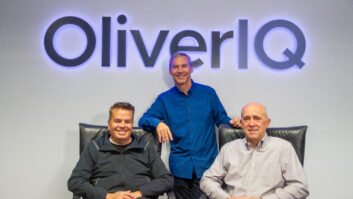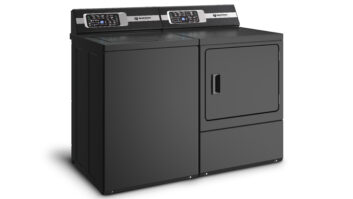Satellite-based HD media delivery service XstreamHD is gearing up for a fourth-quarter launch of its high-performance digital entertainment systems and service, executives told TWICE.
The service, which will use a ku-band satellite leased from EchoStar, is being developed to deliver Blu-ray-quality HD movies and sound, and high-bit-rate DRM-free lossless multi- and two-channel music. Lossy music versions will also be available for portable players and similar devices.
XstreamHD will launch the service through its own direct-sales Web site, offering a choice to self-install the system or to add professional installation. As the product and market develops, the company will look to expand distribution to CE chains and CEDIA installers, said George Gonzalez, XstreamHD CEO.
Consumers will purchase a receiving system that enables the reception and storage of rental or purchased movies and videos and purchased music, delivered to a high-capacity server, connected by a 1GB Ethernet cable to a media receiver. The latter will house decoders and outputs.
The server will manage the satellite receiving and storage on its up-to-2TB hard drives, capable of carrying hundreds of HD movies and thousands of music titles at a time. The server, which is upgradeable, will contain two slide-in hard-disk-drive bays. An eSATA connection is also available for add-on storage.
Unlike competing Internet-based services, such as Vudu, CinemaNow or Netflix, XstreamHD will deliver videos in full-quality 1080p and some of the latest advanced multichannel sound formats, Gonzalez said.
Receiving systems will come with a choice of two media receivers containing differing levels of decoders and outputs.
The standard media receiver includes a two-channel analog output, optical S/PDIF and coaxial digital output and HDMI, which will carry a majority of the decoded audio content as well as video.
The pro media receiver version will add to that additional SSD-based storage and eight analog audio outputs, which will carry decoded signals from the internal audiophile-grade DACs with output quality in the 115dB range, Gonzalez said. These will connect a users’ 7.1- or 5.1-channel-ready A/V receiver or preamp.
Additional features are being added to support codecs for 7.1 lossless FLAC, Dolby Digital+ up to 7.1 channels, AAC+ up to 7.1 channels and lossy coders, including MP3 and WAV.
Pricing has not been set yet on the pro version of the media receiver, but Gonzalez said, “We are going to take an innovative approach,” pointing out that the standard media receiver and media server pair are expected to retail for $399 (depending on the number of drives ordered).
The service will carry a $10 monthly fee, plus the fees for the rental or purchase of movies, videos and music.
For music, XstreamHD plans to license about 1.1 million titles with a mix of two-channel and multichannel content. Files will be available in a few formats, Gonzalez said, but the consumer will have the option to receive it in DTS Master Audio (lossless) or in FLAC (lossless). Additionally, consumers will have the choice of paying for the lossless (less compressed, CD and DVD quality) rights or for the rights to lossy versions (heavily compressed, iPod quality) that have been transcoded down.
Gonzalez said users opting for lossy versions (AAC+ in varying bit rates and Dolby Digital+) may want them for portable media players or similar devices.
XstreamHD has agreements with most of the major movie studios to supply content. The service will accommodate the studios’ choice of renting or selling titles, but he said, many of the studios will now do both. Those who purchase video titles electronically will also be given to the option to buy a physical Blu-ray or DVD version as well. Title fees will be comparable to those charged by competing services.
Consumers will purchase the DRM-free music by the track, by the album or possibly in packages of songs with access to material from a specific label’s catalogs.
As for networking, Gonzalez said, the DLNA-compliant server was designed as a whole-home solution.
“It needs to be able to service multiple devices at the same time. We can do four [simultaneous] Blu-ray quality HD bit streams in 30 to 100Mbps bit rates where competing services can only do 3.8Mbps at best,” he said.
Studios will typically supply XstreamHD with movie soundtracks encoded in DTS Master Audio, since the service is not equipped to handle Dolby TrueHD at this time. In cases where movies are produced in TrueHD, XstreamHD will request the sound tracks in PCM, Dolby Digital or Dolby Digital+.
The equipment recently passed DTS Master Audio certification, and is going through FCC certification at this time, Gonzalez said. The first beta versions of the hardware are expected to be delivered in September and October.
The focus for the last six months, Gonzalez explained, has been on turning over the technology for the contract manufacturer to be able to produce in volume.













